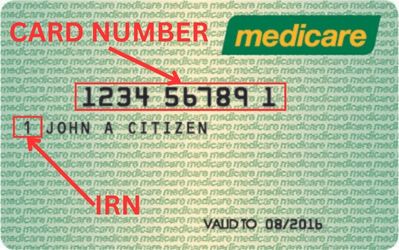What the Pre-exposure Prophylaxis is
Pre-exposure prophylaxis is also known as PrEP. It is the use of an antiretroviral medication to prevent the acquisition of HIV infection by HIV-negative (uninfected) individuals (1).
The daily intake of PrEP can ensure the presence of the medicine in your bloodstream and stop HIV from spreading through your blood in your body. In case you don’t follow the daily intake of PrEP you increase the chances of not providing enough medicine in your bloodstream, thus PrEP might not block the virus (2).
In 2018, the Federal Minister for Health announced that PrEP will be subsidised by the Australian Government through the Pharmaceutical Benefits Scheme (3).
People advised taking PrEP
In case you belong to one of the below-mentioned categories, you are advised to talk to your doctor about PrEP. Initially, you must make sure that you are HIV negative, this is why your doctor will check your HIV status and then evaluate the risk of infection and also discuss with you the possible side effects of The PrEP. You should consider taking PrEP if you are:
- Men and women whose partners have HIV
- Heterosexual men with a partner who is HIV positive and are trying for a baby
- Homosexual men who have sex with other men without using condoms
- Drug users who inject drugs and drug users who share injecting equipment
- Men and women having sexual contact without protection with people who use drugs
- Diagnosed with a sexually transmitted disease in the past 6 months (2,4).
Furthermore, PrEP is a matter of consideration for people who have been prescribed non-occupational post-exposure prophylaxis and report continued risk behavior (2).
In Australia, according to the national statistics, sexually active gay and bisexual men, transgender people and heterosexual people with an HIV positive partner who does not have an undetectable viral load are among the groups of people on higher risk for HIV (5).


What are the available PrEP options?
One PrEP option – and the most usual- is the orally taken treatment. It is based on using an antiretroviral drug available for the treatment of HIV infection and is a combination of emtricitabine and tenofovir. Another PrEP option is the one applied topically as a vaginal gel containing tenofovir. However, the efficacy of the orally taken PrEP is greater while the efficacy of gel is moderate. Moreover, there are more studies about the oral PrEP and they show that its use has high efficacy on the prevention of HIV (1).
How effective PrEP is
According to the literature, PrEP is highly effective for preventing HIV but it should be used following the doctor’s instructions. Therefore, it is important to take PrEP consistently because otherwise, it is much less effective (2).
The efficacy of PrEP is widely accepted by the scientific community. Specifically, oral daily PrEP has been recommended by WHO since 2015 as an effective prevention option for people at HIV risk (6).
The Centers for Disease for Disease Control and Preventions highlights that PrEP reduces the risk of getting HIV from sex by about 99% and in the group of people who inject drugs, it reduces the risk of getting HIV by at least 74% when taken consistently (2).
Side effects
PrEP can cause some side effects including nausea, headache, rash, vomiting, loss of appetite, but these generally subside over time. In general, no serious side effects have been observed (7). However, some people, may experience an increase in creatinine and transaminases- enzymes related to the kidneys and liver. High levels of these markers indicate damage to the above-mentioned organs. Therefore, long-term use of PrEP can potentially damage the kidneys. Another possible long-term side effect is the loss of bone mineral density (8).
Should I visit in person a healthcare provider for starting PrEP?
Not necessarily. However, only a health care provider can prescribe PrEP. Thus, the alternative way instead of visiting in person a healthcare provider is a telemedicine. It can happen through a video or phone consultation and mail-in self-testing. There is a specimen collection kit that contains the supplies for the required testing to start or continue taking PrEP, without the need for an in-person appointment (7).

When PrEP is not the right medication for you
PrEP is not for everyone. You should stop taking PrEP if:
- You have a permanent sexual partner who is HIV negative and you don’t change sexual partners. Therefore, your risk of getting HIV infection becomes low, however besides this you should not be a user of any kind of injecting drugs.
- You are the kind of person who forgets taking his medication on a daily basis. As mentioned earlier, there is not adequate protection against HIV if you don’t remember to get your pills. Thus, if you can’t take your pills when it is planned you should find other ways of protection against HIV.
- You experience side effects from using PrEP, then your physician might decide to stop prescribing PrEP for you (7).
Take home message
Folllowing the WHO guidelines, people at substantial risk of HIV infection should be offered PrEP as a supplemental prevention choice, in the context of a comprehensive prevention (1). No matter if you are getting PrEP, you should not stop using condoms when you have sex. Even though PrEP prevents the infection from HIV, it doesn’t protect you against other sexually transmitted diseases like chlamydia, Hepatitis, and gonorrhea. In adults at increased risk of HIV infection, orally taken PrEP decreases significantly the risk of acquiring HIV infection, however the effectiveness decreases with suboptimal adherence (9).
References
1) World Health Organization. n.d. Pre-Exposure Prophylaxis. [online] Available at: <https://www.who.int/hiv/topics/prep/en/> [Accessed 22 October 2020].
2) Cdc.gov. 2020. Prep | HIV Basics | HIV/AIDS | CDC. [online] Available at: <https://www.cdc.gov/hiv/basics/prep.html> [Accessed 22 October 2020].
3) 2020. [online] Available at: <https://www.afao.org.au/our-work/policy-and-submissions/prep/> [Accessed 22 October 2020].
4) Healthdirect.gov.au. 2020. Pre-Exposure Prophylaxis (Prep). [online] Available at: <https://www.healthdirect.gov.au/Pre-exposure-prophylaxis-PrEP> [Accessed 22 October 2020].
5) 2020. [online] Available at: <https://www.afao.org.au/wp-content/uploads/2018/03/2335_afao_prep_fact_sheet_11-1.pdf> [Accessed 22 October 2020].
6) Who.int. 2020. Exciting New Results From Long-Acting Prep Study Show It To Be Effective In Preventing HIV Acquisition In Men Who Have Sex With Men And Transgender Women. [online] Available at: <https://www.who.int/news/item/20-05-2020-exciting-new-results-from-long-acting-prep-study-show-it-to-be-effective-in-preventing-hiv-acquisition-in-msm-and-transgender-women> [Accessed 22 October 2020].
7) Cdc.gov. 2020. Prep | HIV Basics | HIV/AIDS | CDC. [online] Available at: <https://www.cdc.gov/hiv/basics/prep.html#is-PrEP-safe> [Accessed 22 October 2020].
8) Stanfordhealthcare.org. 2020. Pre-Exposure Prophylaxis. [online] Available at: <https://stanfordhealthcare.org/medical-conditions/sexual-and-reproductive-health/hiv-aids/treatments/prep.html> [Accessed 22 October 2020].
9) Chou R, Evans C, Hoverman A, et al. Preexposure Prophylaxis for the Prevention of HIV Infection: Evidence Report and Systematic Review for the US Preventive Services Task Force. JAMA. 2019;321(22):2214–2230. doi:10.1001/jama.2019.2591
